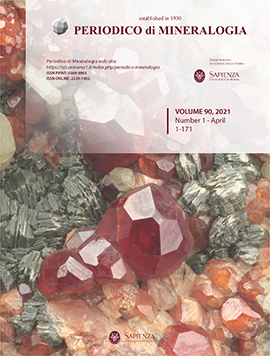Provenance of late Republican Roman pottery from Caput Adriae revealed by non-invasive mineral chemistry of melanitic garnets and other igneous minerals
DOI:
https://doi.org/10.13133/2239-1002/17146Keywords:
Republican Roman pottery, Caput Adriae, melanitic garnets, igneous minerals, mineral chemistry, provenanceAbstract
Quite rare pottery shards showing a paste rich in black sand particles, possibly igneous minerals, have been discovered in late Republican Roman sites of Trieste area (NE Italy) and SW Slovenia in the Caput Adriae. Most of them belong to late Greco-Italic and Dressel 1 amphora types, in use from the end of the 3rd and the beginning of 1st centuries BC. Following a methodological procedure based on the analysis of igneous temper, proved to be particularly effective by several scholars, numerous minerals have been extracted from the surface of 16 pottery shards, without causing any visible damage to them. Microprobe analysis has allowed the identification of igneous minerals (olivine, clinopyroxene, feldspar and garnet), most likely originating from the Roman or Campanian magmatic provinces. The chemistry of garnets, indicated in the past as a possible tracer of ancient commerce but no longer used in the last decades to study Italian late Republican pottery, has proved to be a promising tool to distinguish among the two magmatic provinces. According to our study, most of the investigated garnets-bearing samples would originate from Somma-Vesuvius while some of them from Latium.Published
2020-10-19
Issue
Section
ARCHAEOMETRY and CULTURAL HERITAGE


